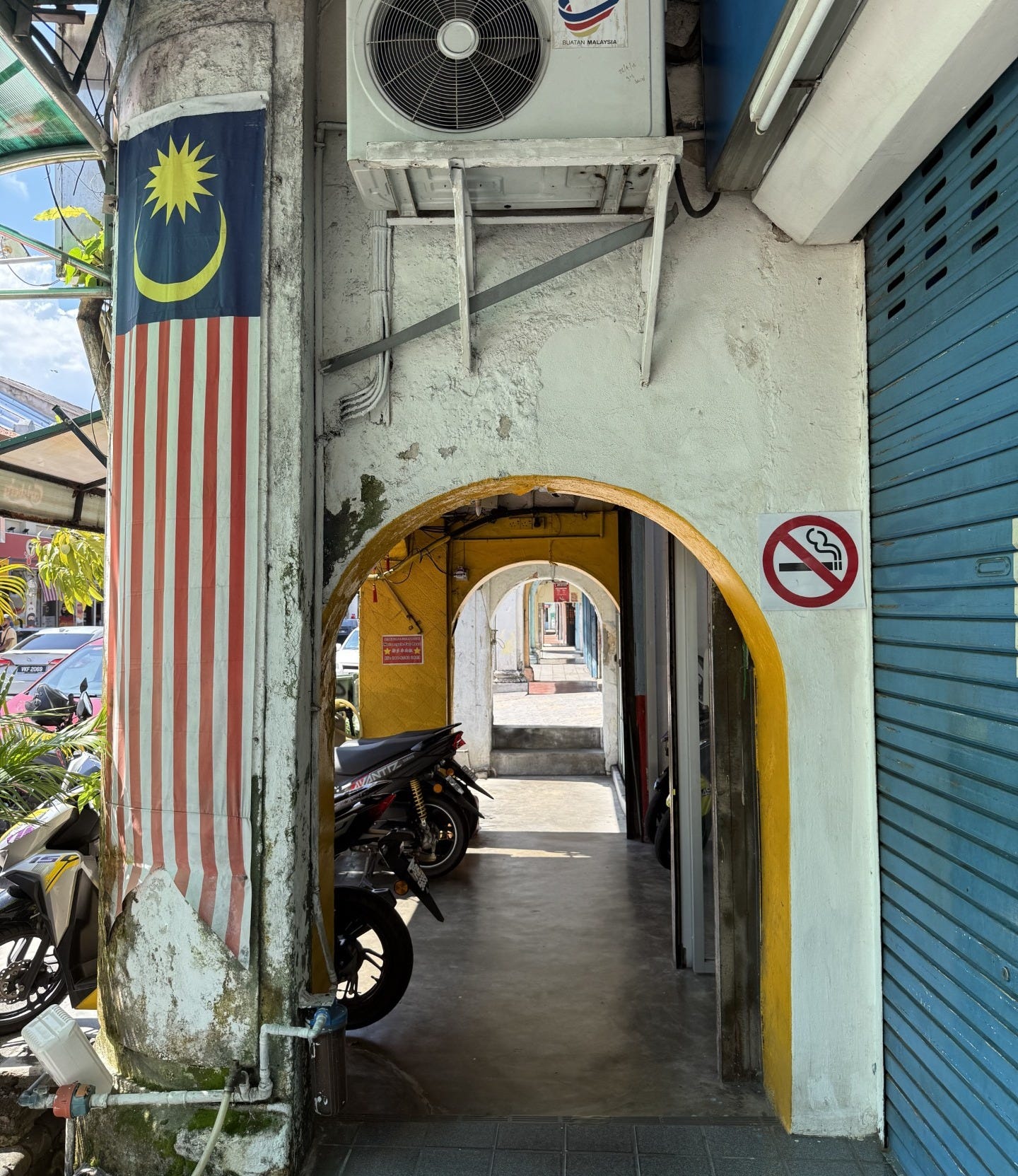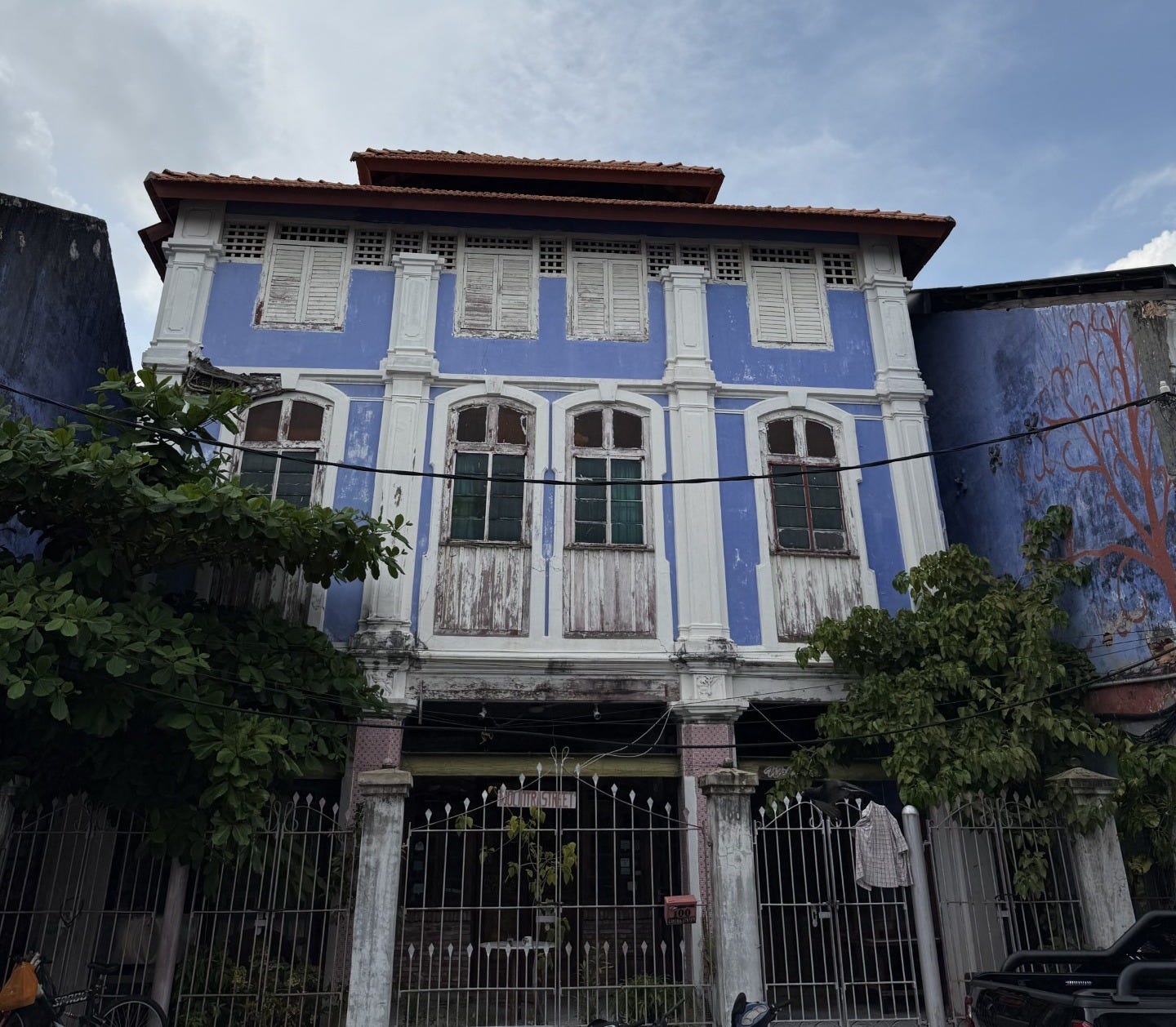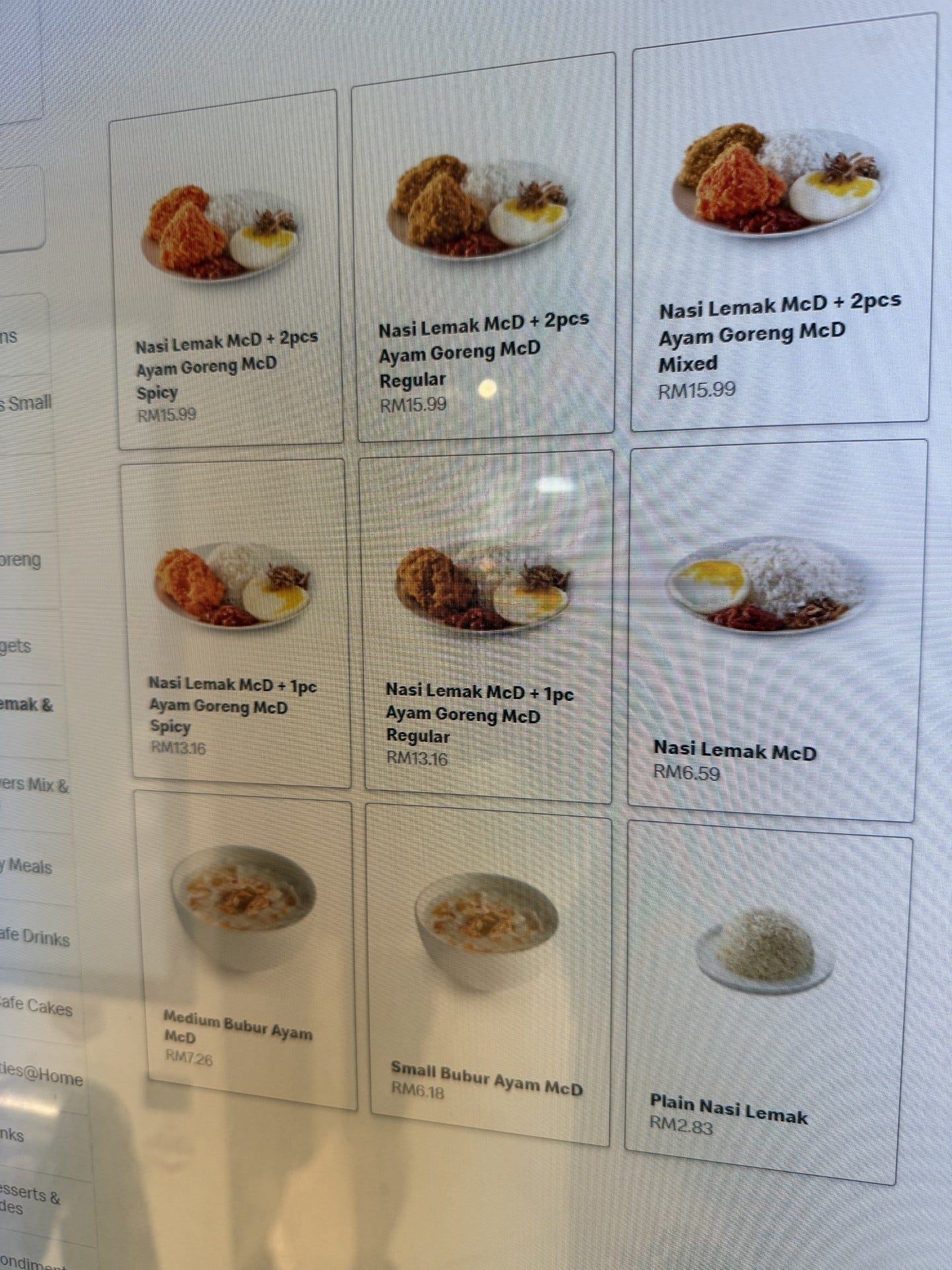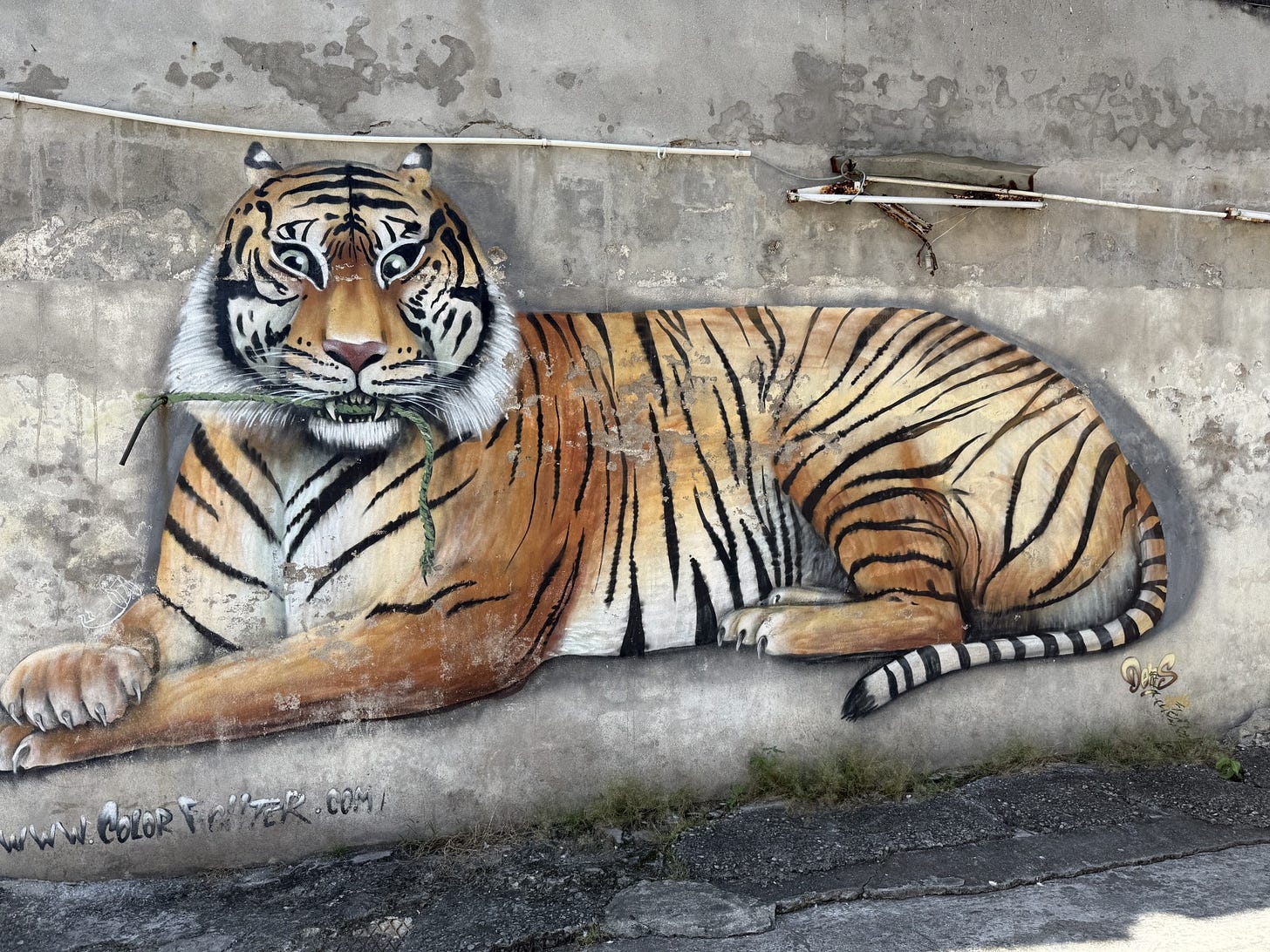A ‘Ferry’ easy journey ⛴️
A German couple from Hamburg approached us at Kuala Kedah ferry terminal: ‘Is anyone going to Georgetown? We are taking a taxi there and wanted to know if anyone was keen to share?’
Public transport would normally take 4 hours. That’s only if every train and bus changeover went smoothly. A direct hour and half journey for 150 ringgit (£30 and around $35) was too good to turn down. ‘Count me in’ I shouted. The train/bus combination would likely have only cost half of that at most. However, I would have lost most of the day. I said goodbye to my friends who themselves were headed to Kuala Lumpur. Bring on Georgetown.
In 1771, under the instruction of the British East India Company, Francis Light was tasked to establish relations on the Malay peninsula. The sultanate of Kedah (a breakaway Siamese state) offered Penang Island in exchange for British protection. Light called the landing site Georgetown after the Prince of Wales at the time. By 1786 he had established Fort Cornwallis on the island. (Lord Charles, a Governor General of India, hastened American independence by surrendering at Yorktown.) The town would become the first British colony in Southeast Asia. Both Fort Cornwallis and Georgetown survive to this day and are classed as UNESCO World heritage sites.
‘ 2 million people live on the island’ according to my new German friends. I struggled to believe that. The island was roughly 100 Sqkm. I had spent the best part of 3 weeks on quiet tropical islands so large populations seemed daunting. The road swung to the right and out of a jungle of road signs. On the horizon a mountain top could be seen beyond a bridge that initially sloped upwards. As we raced across the bridge, tall apartment blocks and hotels could be seen growing from the horizon. It was easier now to see how such a small island could house so many.
After we arrived I strapped my many bags to myself and hurried along to my hostel. The din of noise created by the endless streams of traffic irritated. Not to mention the accompanying car fumes. I arrived to my room. A 10 person ‘mixed’ dorm populated by just men. Something you could have guessed by the smell alone. An overly excited hostel rep showed me around and told me about the different ‘happy hours’ for drinking and what events they had planned later.
Georgetown is so Hap- ‘penang’ 🏙️
Multiculturalism was on display everywhere. Centuries of being a major trading hub with Persian, Indian, and Chinese traders had created a rich culinary melting pot. As I turned off ‘Campbell St’, various street vendors were offering Roti’s (Of Indian heritage) and Dumplings (Of Chinese heritage). Small, colourful, plastic tables and chairs spilled into the side streets. The table and chair sets were similar to the type you buy for a toddler or young child. However, across Asia, this is the norm for al fresco street market dining.
The architecture in Georgetown epitomises the history of Malaysia. Sino-European shop-houses line each street. Sweeping roofs with gable ends. Dragon, Peony, and Lotus flower motifs emphasise Southern Chinese influence. Carved timber air vents on the upper level also showcase Southern Chinese influence. European additions such as venetian arches, ionic columns, and five foot walkways add to the unique shop-house façade.
Did You Know…❓
Georgetown is home to Malaysia oldest newspaper. Dating to 1910
Quiz Time 📚
A call to prayer echoed through the streets. A reminder of yet another cultural flavour in the melting pot. Watching the local traffic is a reminder of how an external global influence still persists. If it isn’t the latest Chinese car driving past, then its a Japanese scooter, or even a Mini Cooper from my humble Oxfordshire.
The first evening was spent at the hostel bar. I initially gasped at the prices. A 50% tax on alcohol meant drink prices were London-like. Thank the heavens for happy hour. A whisky and soda was ordered. With Ice. Dark windows and lights similar to those in an operating theatre made for a unique atmosphere. I was invited to sit with a group of girls. Two from the UK who were studying in China. The other two were German and Swiss. The initial backpacker small talk was followed by many rounds of Uno (and drinks).
What is fast food like in Asia…? 🍔🍟
McDonalds (Malysia): Chicken and Rice is a popular dish at McDonalds in Malaysia. Cant Imagine getting it in the western world:
Artists always ‘draw’ attention 🎨
It was a late start to the next day. I wish I could blame the black out curtains. However, a tour of the local bars until the early morning was more likely the cause. Since its designation as a UNESCO world heritage site in 2006, Georgetown has seen an emergence of art museums and street art. In 2012 a Lithuanian artist called Ernest Zacharevic started his Mirrors Georgetown project. The success of his instalments such as ‘Children on a Bicycle’ helped inspire other local artists to make similar art works.
It was hot. Maybe too hot. The tarmac on the roads, concrete buildings and traffic congestion made it seem much hotter. I ended up at an upside down museum. It was a recommendation by a friend I had met back in Koh Samui. 35 Ringgit (Just under £7 and around $8) to enter and no shoes allowed. Each room had a designated member of staff to take photos of you. It made the place seem like it was designed for an Instagram generation who cared more about their appearance on social media than actual art. Regardless, I still asked them to take multiple photos of me. When in Rome. See below:
I left Georgetown on the 23rd of December. Heading for Kuala Lumpur. It will be my first Christmas and New Year away from family and friends.
Tune in to my Christmas and New Year experiences as a backpacker in Southeast Asia.
All the best,
T










Thanks for the reminder of my experiences in Georgetown back in 2022. I spent some great time exploring the many streets, food and art installations you mentioned. Safe travels!
Brilliant! What fun all round! See ya soon💫💫